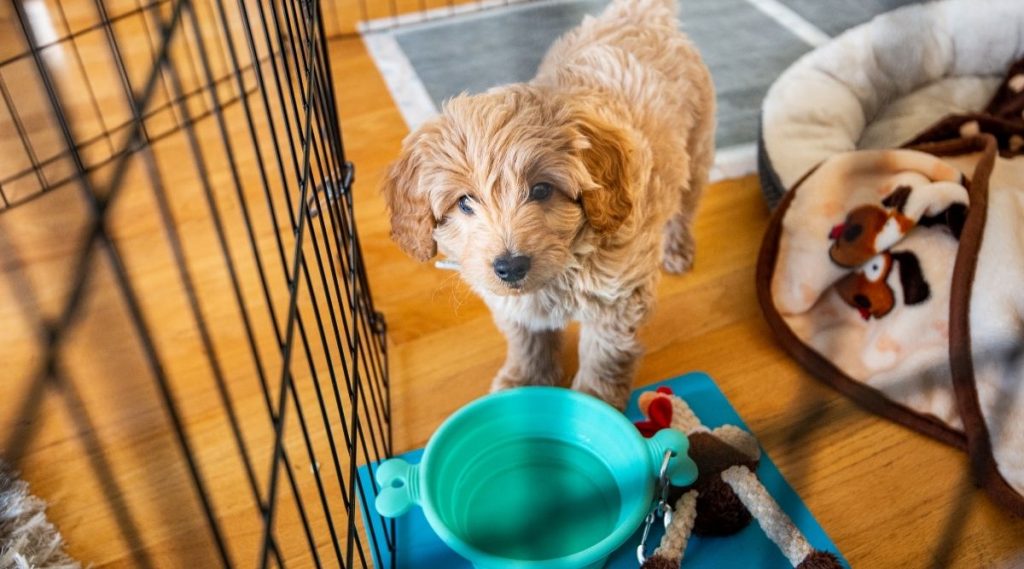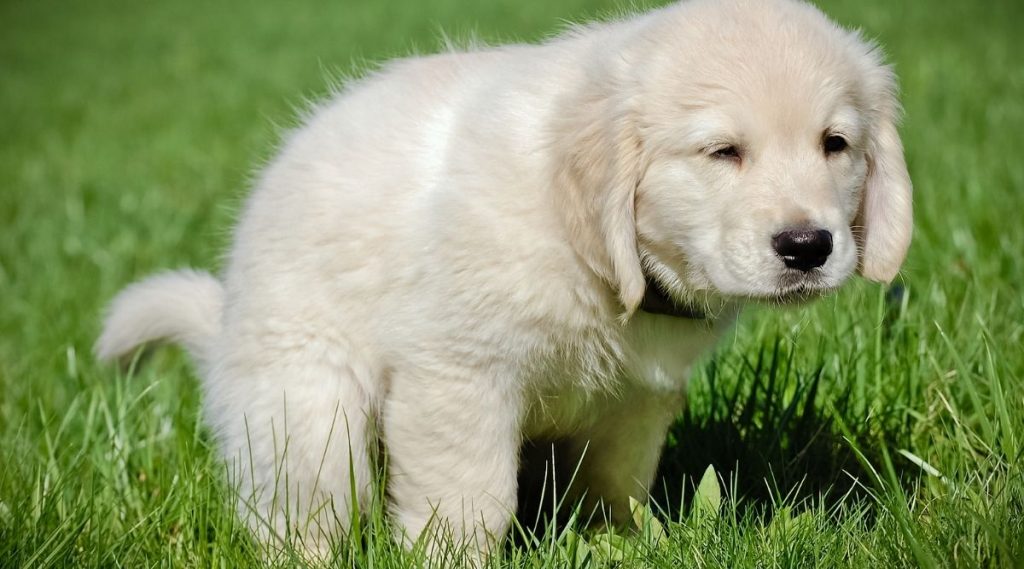This post may contain affiliate links. Please read my disclaimer policy
Learning how to properly toilet train your puppy is one of the most crucial elements of having an adorable friend. Puppies that often pee or poop in their owner’s homes are one of the reasons why puppies are sent to shelters.
It can be incredibly frustrating and expensive to have to keep cleaning or replacing flooring – not to mention the accompanying smells that go along with it! So, the key to having a long and happy life with your puppy starts with toilet training.
According to experts, there are two main training plans for toilet training your puppy.
The first is crate training and the second is paper training.
Along with these training programs which we will dive into in more detail soon, there are a few things that you need to do with your puppy to ensure maximum success. These include:
- Plenty of walks
- A controlled doggy diet
- Regular schedule with consistency
- Regular exercise
- Regular playtime
- Teaching your puppy to use the outside as a bathroom
- Getting the right supplies for toilet training
We’ll start with the crate training and explore in-depth what it is and how it can be effective.
Contents
Crate Training
It is understandable that many people would be apprehensive to keep their puppy confined to a crate as some sort of prison, but if you do this correctly for the first few days – you do get used to the idea and you can see its benefits.
Not only does this type of training make things a whole lot easier at home, but it also gets your puppy used to normalities around the house like guests, going to the vet, traveling in the car, and being safe.
Canines naturally seek out dens for comfort and safety, so providing one and getting your puppy used to it makes things simple.
Over a short time, your puppy will grow to love its area as its den.
The thought process behind the crate is simple. Just like humans, dogs hate to have to sleep in damp conditions – particularly hate sleeping or lying in their own filth.
In order for this training program to work out correctly, you’ll need to be sure that the crate isn’t too big – otherwise, your puppy will use a corner to do its business and sleep elsewhere.
You’ll have to make sure the crate is big enough for the puppy to lie down fully in though so it is comfortable for them, giving them room to turn around and stand.
It’s actually possible to get crates that you can adjust the sizes on while your puppy gets bigger.
The puppy will soon learn that when it needs to go to the bathroom – it doesn’t want to do it in its den, so the puppy will scratch at the door or whine to be let out.
It’s important that you adhere to the puppy’s request.
If you wait too long, your puppy will connect the idea of going to the bathroom anywhere it likes and there will be no consequences. As it gets older, the puppy might simply poop in really inconvenient areas like the living room carpet!
Paper Training

The second training program is paper training.
Experts believe that this method can work but can also be much more difficult because you’re giving the puppy a choice over its bathroom plans.
Ideally, your puppy would understand that the inside is for living in and the outside is for walks and the bathroom.
The problem is, we don’t all live with the same circumstances. Some of us have jobs that require us to be a long way away pretty much all day, often without someone to check in on the pup.
It’s also not wise to leave a puppy to live outside in a doghouse for hours in the day.
The puppy is not yet developed and might struggle to fend for itself. Moreover, with some puppies of such small stature, other animals could attack them.
Not to mention, puppies in distress can make loud noises which could cause problems with the neighbors!
Puppy pads or paper training involves the puppy using them as a bathroom in specific areas of the home, like cats with litter boxes.
As the puppy ages, you can decide to move the pads to the outside areas and the puppy should begin to only use that area.
Making A Schedule For Puppy Potty Training
The success of your puppy’s housetraining will all stem from the creation of a proper schedule.
Puppies like human babies have small bladders so any liquid will quickly pass through them.
Giving your puppy the right guidance and opportunities to go to the bathroom in the right way is essential.
A rule of thumb is that you can link one year in age to one hour of bladder time. So, if your puppy is 3 – it can probably last around 3 hours before it needs to go to the bathroom.
When drafting your schedule, you should pay attention to your puppy’s daily activities and try to make your own.
Remember to take the puppy out for bathroom time at least:
- First thing in the morning
- After playtime in the house
- After crate time
- After naptime
- If it cries in the crate
- After eating
- After drinking
- Last thing before bed
Of course, this will keep you incredibly busy! You may be running in and out of the house or around the home a lot during the day.
Therefore, if you work away most of the time, it is a good idea to have someone check in on your puppy most of the time.
If needs be, you might have to employ someone on a part-time basis to ensure your puppy is being looked after around the clock.
If you can’t afford to do this, consider asking a family member.
Whatever the choice you get to, you’ll need to make sure the puppy understands where the place to go to the bathroom is – before it goes too far and the puppy uses the rest of the home as its bathroom!
Keep An Eye On Your Puppy
Observing and supervising your puppy is essential. Remember, like us – some can control their bladder better than others and some might not need to go as often.
This will also depend on the breed of the pup.
If you’ve noticed tell-tale signs that your puppy is about to go to the bathroom, ensure you get the puppy to your approved potty spot and tell other people about these signs.
Eventually, the puppy will connect that place to potty time and will head there before it goes – even in the middle of playtime or naptime.
Diet Control
Like with human babies, puppies haven’t yet developed their digestive system so they cannot take a whole lot of food just yet.
Keep the schedule to just 3 meals a day and make them pup-sized.
Make sure you’re using good quality food and keep an eye on the puppy’s poop.
If the puppy is sick, it will be shown in its stool and might affect the bathroom training.
Summary
Teaching your puppy to be toilet trained is incredibly important and needs to be done with care, attention, and patience.
Make sure that you are attentive and if you are not around the home most of the day, you’ll need to get someone in to look after the pup.

